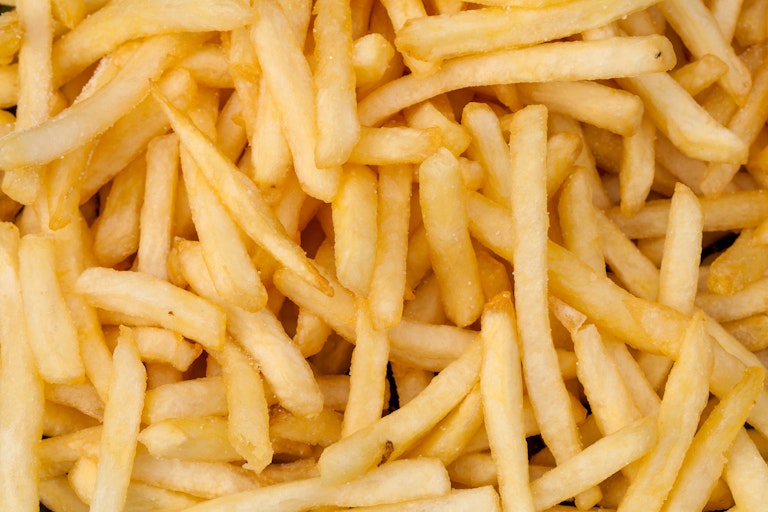Australian guidelines recommend limiting salt intake to six grams a day or less. The World Health Organisation advises limiting salt even further: to 5g (for adults) and 2g (for children) per day or less. But for this article, we’ll stick to the Australian guidelines.
What we generally refer to as “salt” – the stuff that we sprinkle on our food – is actually sodium chloride.
It’s the sodium from the salt that can lead to high blood pressure when consumed in high amounts.
Usually our kidneys are good at getting rid of excess sodium in the urine. But when problems with this occur, excess sodium enters the bloodstream. This can boost the amount of blood pumped around our body. The increased pressure on our blood vessels and heart raises the risk of stroke, as well as heart and kidney problems.
Lowering your sodium intake will improve your health and reduce your risk of experiencing these problems, largely through the reduction in blood pressure.
One gram of salt contains approximately 400 milligrams of sodium. The maximum daily limit for adults is a little less than six times this figure: 2,300 milligrams of sodium per day.
Children need much less sodium. Limits range from 1,000 milligrams of sodium per day for children aged one to three years, and between 1,400mg to 2,000mg for those aged between four to 13 years.
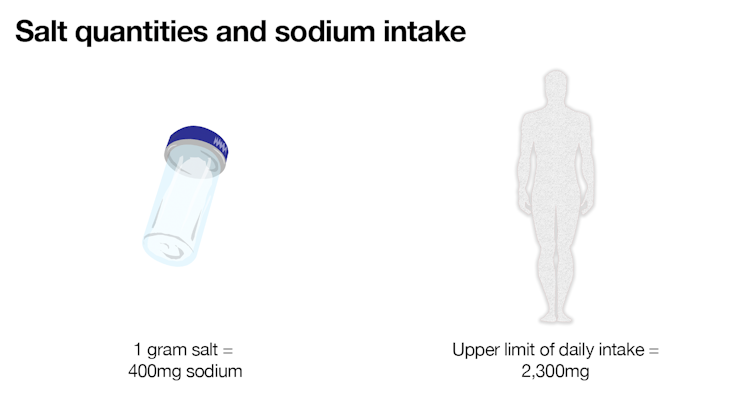
The sodium chloride (table salt) we add to other foods during cooking or at the table accounts for less than a quarter of sodium intake. A very small amount of sodium is also present in many foods such as milk and meat that contribute only a very small amount to our overall intake.
Most sodium we eat comes from processed and pre-packaged foods. Sodium is commonly added to foods during processing to add flavour, for preservation and as a raising agent (sodium bicarbonate).
Around 60% of Australians over the age of two years exceeded the recommended daily maximum intake.
The foods that account for the largest proportion of sodium intake in Australian adults (about 25%) include biscuits, cakes, pastries, pies, dumplings, pizza, hamburgers, hot dogs, and pasta and rice mixed dishes.
A few slices of takeaway pizza or a hamburger easily provides around 65% of daily upper limit of consumption, with around 1,500mg sodium.
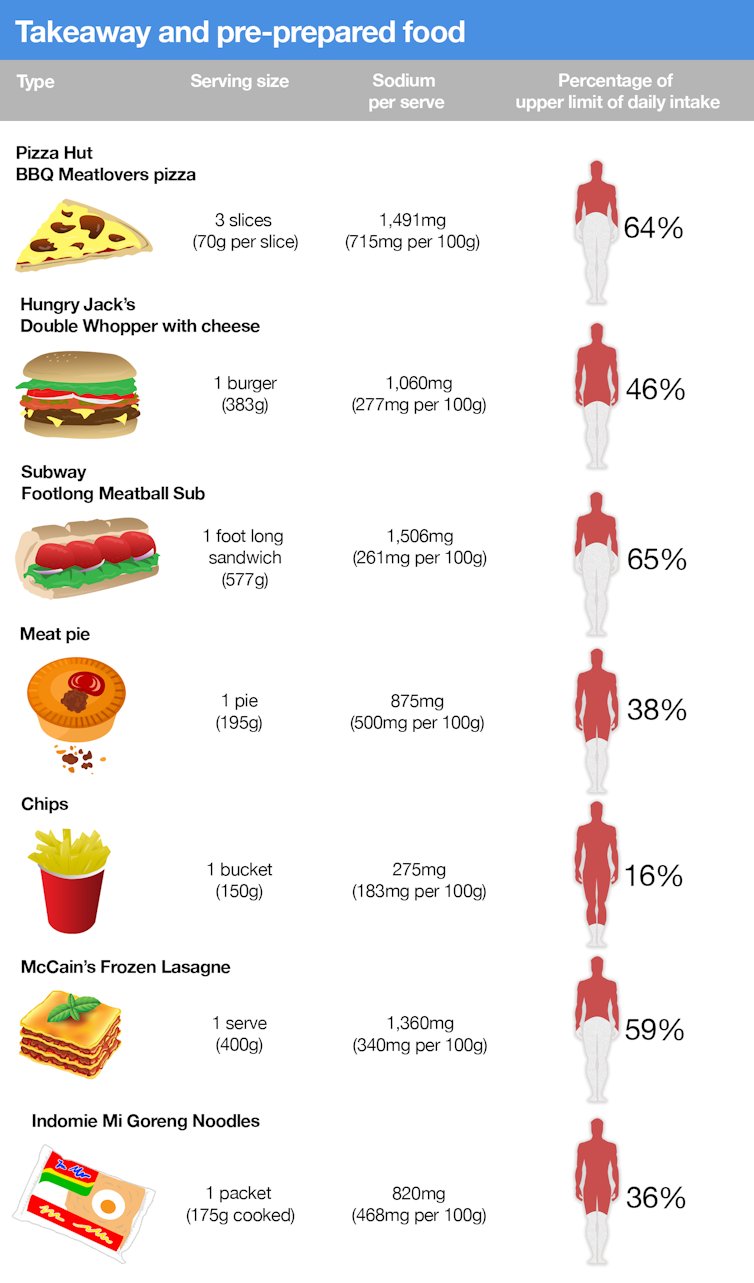
Savoury snack foods contain high amounts of sodium. Many sweet snack foods and bakery products often contain high levels of sodium as well. This is usually from added salt and other additives such as sodium bicarbonate, which helps baked goods rise.
An iced vanilla doughnut or low-fat banana muffin can contain up to 650mg of sodium (roughly 30% of the daily upper limit).
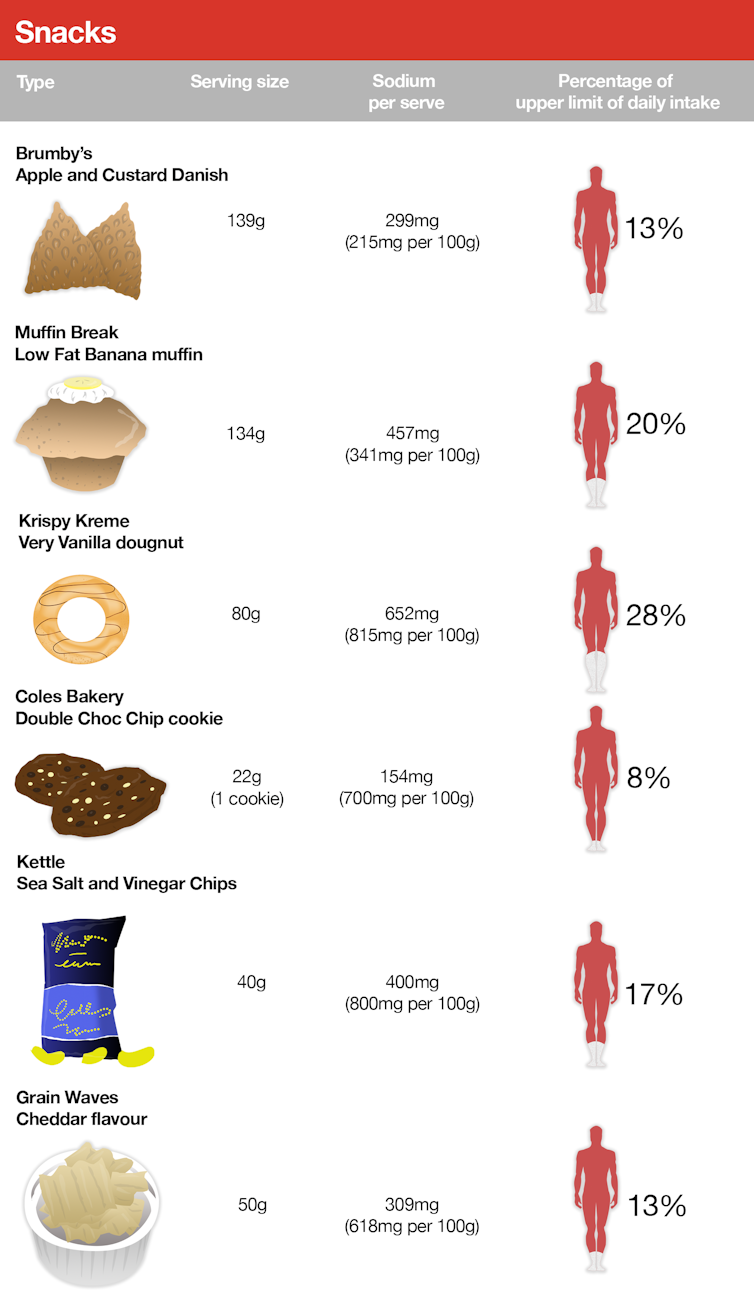
Some other foods we eat everyday, such as breads and breakfast cereals, contribute a lot of salt to our diets. These foods aren’t always really high in sodium but because we eat of a lot of them, it adds up. A continental bread roll such as a panini or ciabatta can provide up to 450mg per roll (20% of the daily upper limit).
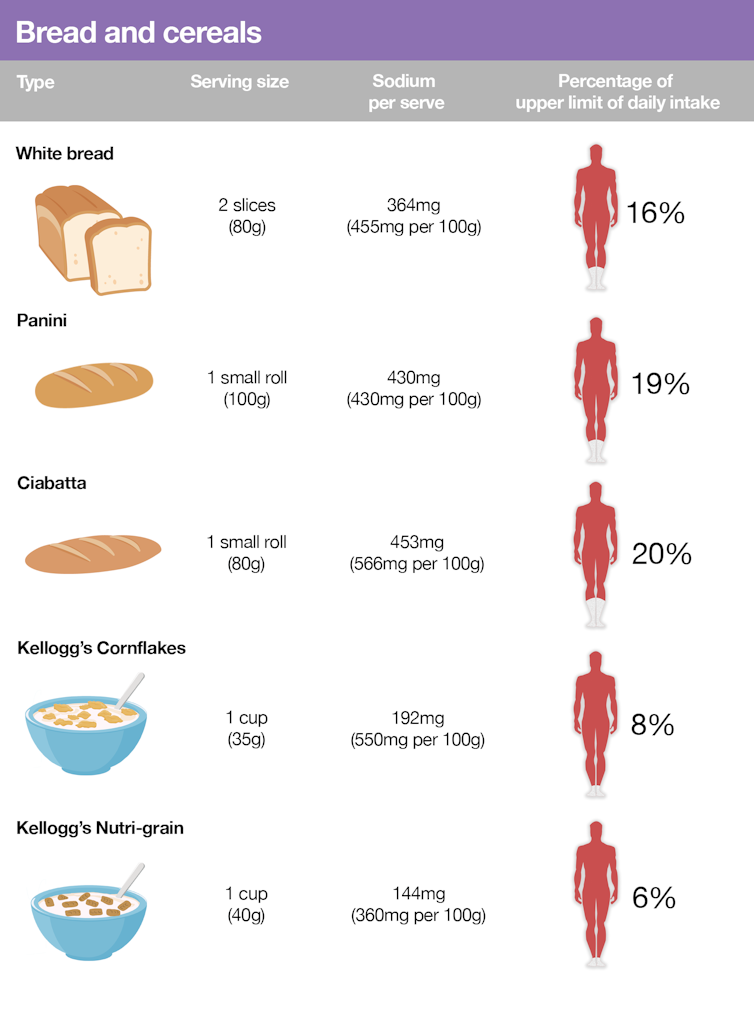
You already know foods such as processed meats and cheeses are very salty, but just how much might surprise you. A few slices of leg ham or a couple of BBQ sausages will provide around half the daily limit of sodium. Combine that with a few slices of bread for a sandwich and some tomato sauce or cheese, and you will have easily exceeded the upper limit of consumption.
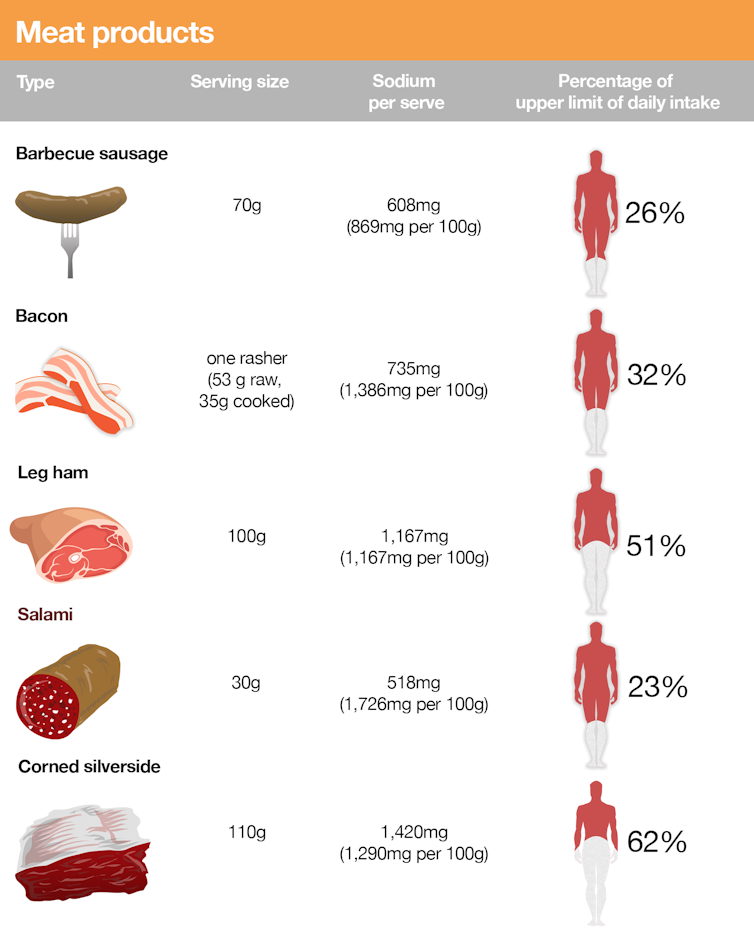
Passing on added salt at the dinner table is a good habit to reduce sodium intake, but take care adding sauces or condiments as these are likely just as salty. Tomato pasta sauce and stir-fry sauces can contribute up to 480mg in a single serve (up to 20% of the daily limit).
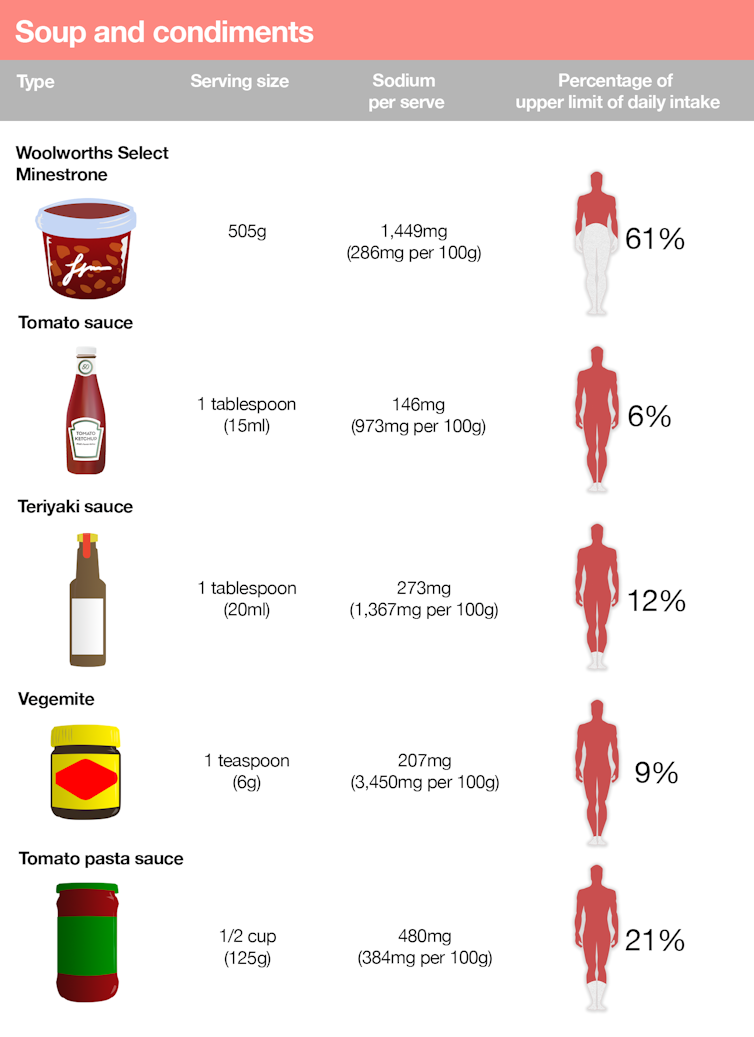
Because sodium is present in so many processed foods – even sweet snacks and baked goods – you shouldn’t always rely on your taste buds to determine how much you’re consuming. So how can you cut down on your sodium intake?
First, eat fewer packaged and processed foods. In addition to sodium, they often contain high amounts of sugar and fat and very little of any other beneficial nutrients. So reducing your intake of these foods can substantially improve the quality of your diet.
Second, swap processed foods for those cooked or prepared at home. Swap sandwich fillings like processed meats with ones you’ve cooked yourself (such as left over roast meat). Opt for fresh fruits and unsalted nuts instead of packaged sweet or savoury snacks.
Instead of takeaway meals like pizza or frozen dinners, prepare home-cooked versions. Here you can use more fresh food ingredients (which are low in sodium) and you can control the added salt. Fresh foods are also higher in potassium, which has beneficial effects on lowering blood pressure.
Finally, read the labels on packaged foods. Food labels in Australia usually give the figure for sodium rather than salt. So if you are reading a nutrition information panel, try to look out for foods that have less than 400mg sodium per 100g of food. Any packaged food labelled less than 120mg sodium per 100g of food is best.
The George Institute and Bupa Australia’s FoodSwitch/SaltSwitch app is a useful tool to help you navigate and compare sodium content of packaged foods on the go. You can scan the barcode of the product you’re considering buying and see a list of other products with less sodium.

